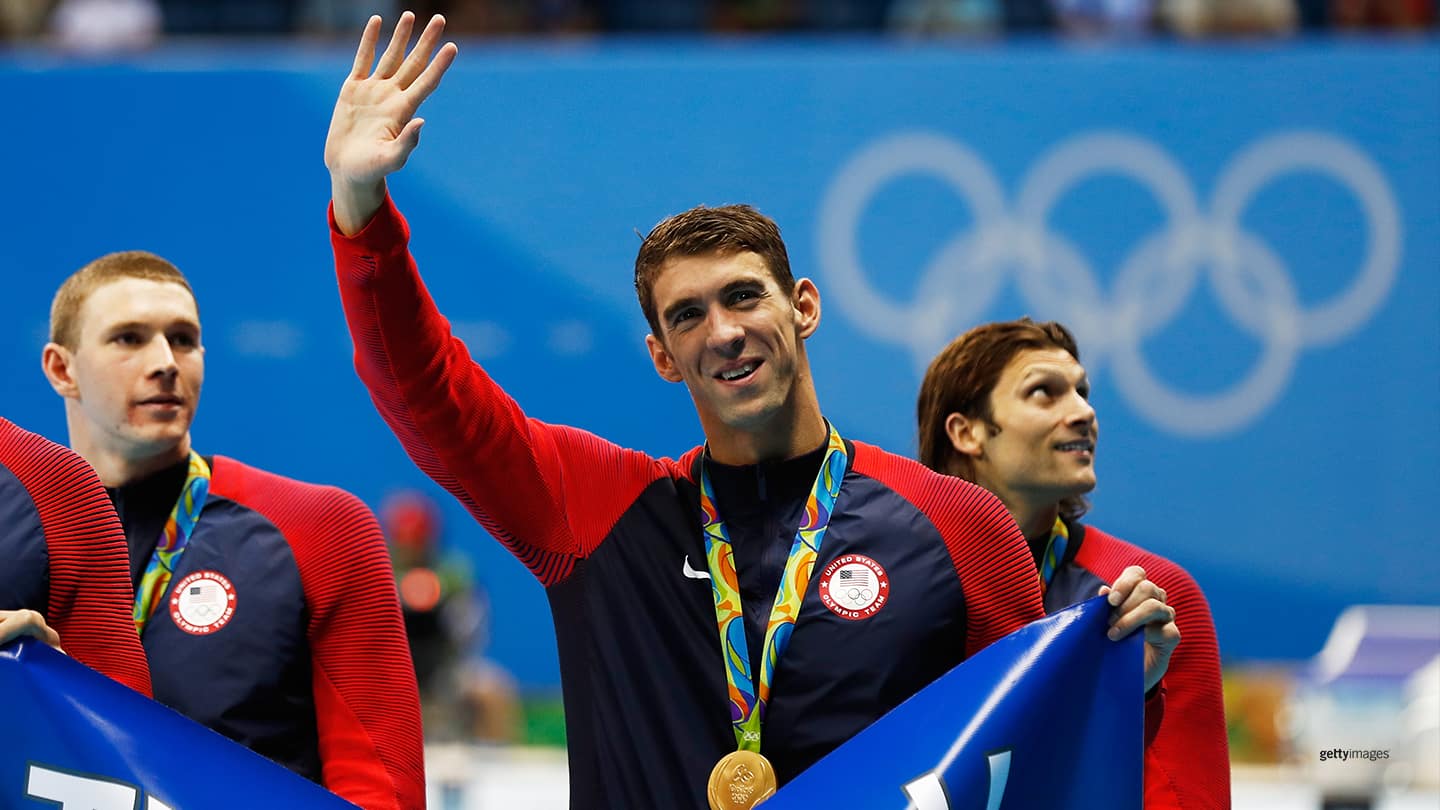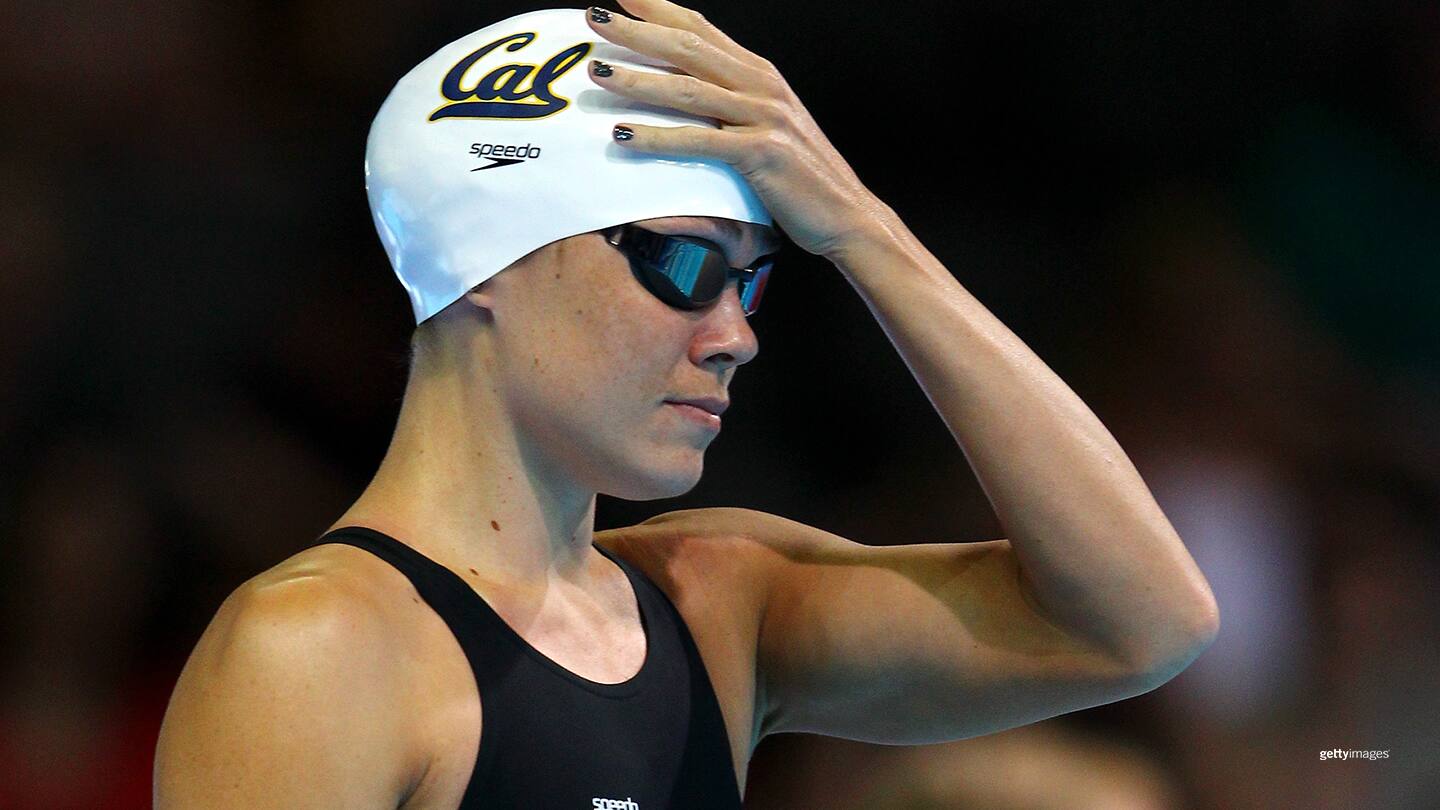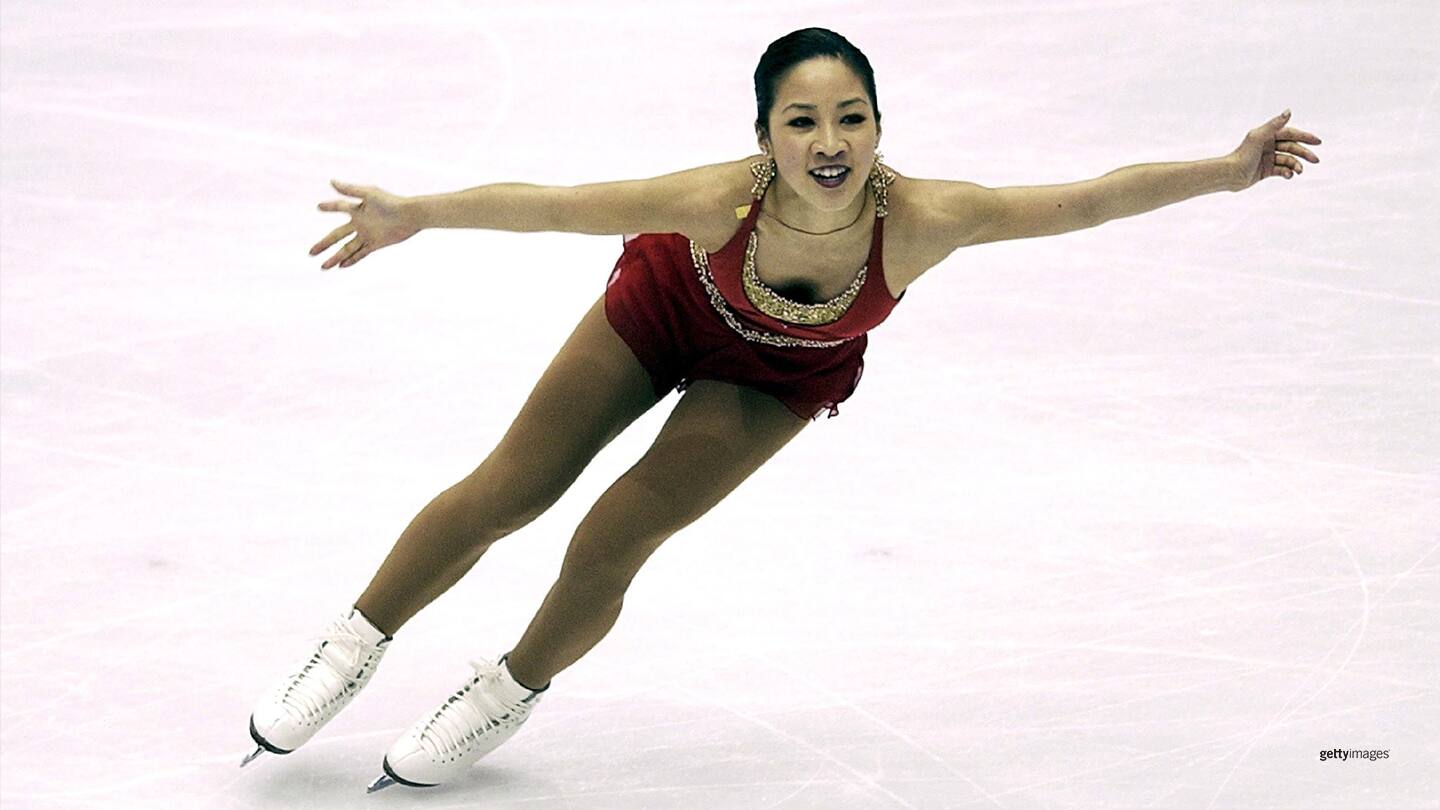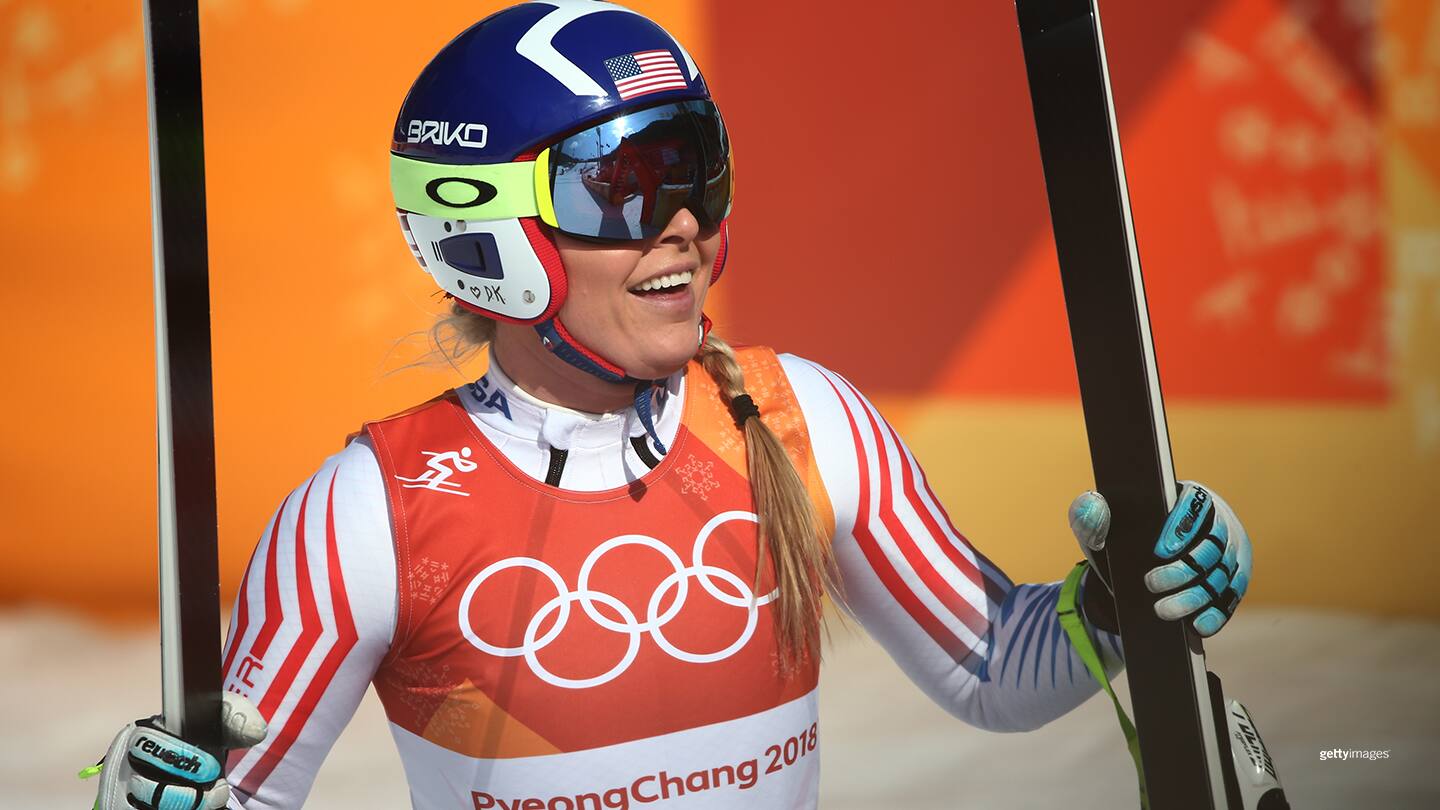
Five Olympians Who Defined Their Sports For A Generation Are Going Into The Hall
by Lynn Rutherford

Michael Phelps waves to the crowd during the medal ceremony of the men's 4x100-meter medley relay final at the Olympic Games Rio 2016 on Aug. 13, 2016 in Rio de Janeiro.
Michael Phelps opened his Olympic career at age 15 at the Olympic Games Sydney 2000, with a fifth-place finish in the 200-meter butterfly. When he closed it in at the Olympic Games Rio 2016, he owned an astonishing 28 medals over five Olympics, including eight gold medals in Beijing in 2008, the most ever by an athlete at a single Games.
On June 24, Phelps will be among 12 individuals and two teams inducted into the U.S. Olympic and Paralympic Hall of Fame in Colorado Springs, Colorado. The Class of 2022 is the 17th class to be inducted and the first since 2019.
He joins fellow swimmer Natalie Coughlin, soccer player Mia Hamm, figure skater Michelle Kwan and alpine skier Lindsey Vonn as individual Olympians entering the Hall.
“Phelps literally became more popular than the sport itself,” Rowdy Gaines, a three-time Olympic gold medalist and member of the U.S. Olympic & Paralympic Hall of Fame, said. “And I know the sport is always going to be bigger than one person, but he became our Michael Jordan, he became our Tiger Woods.”
For Gaines, Phelps’ stature hinges on a series of accomplishments: his number of gold medals, his overall medal count and world records, and, finally, his longevity.
“To me, to be considered the greatest, its individual Olympic gold medals first; he obviously has plenty of those (23),” Gaines said. “And then it’s overall medals. He is No. 1 in that. … He leads by a country mile, in all of the categories.”
Still, Gaines thinks there are aspects of the Baltimore native’s career that are under-appreciated.
“He did things that at his peak, and even not at his peak, that were simply magical,” said Gaines, known best to fans in recent years for his commentary with NBC Sports. “He won three 100-meter butterflies in a row, in ‘04, ‘08 and ‘12, by a total, I think, of 12 one-hundredths of a second (Phelps’ margins were actually .04, .01 and .23). He did things in his career that ran the gamut from versatility to dominance. …
“He didn’t win all of the time, which humanized him, in a way. But he won most of them.”
As a longtime analyst for NBC, Gaines covered Phelps’ triumphs up close. He firmly believes that, had scheduling permitted it, the swimmer could have won even more Olympic gold.
“In ’04, he (qualified) for the 200-meter backstroke, and elected not to swim it,” Gaines said. “And I think he could have won the gold medal in it, had he not had so many other events in his program. He could have won many more medals during that peak period of ’04 to ’09.”
“The amount of events he swam in each Games was just (incredible),” he added. “In 2008, he swam 17 races in eight days. I swam four races in eight days in 1984, and I thought I was going to die. I slept for two days. And I only swam four times in eight days. … Nobody else will win eight gold medals in a single Olympics. It will never happen.”

Natalie Coughlin during the preliminary round of the women's 100-meter backstroke at the 2012 U.S. Olympic Swimming Team Trials on June 26, 2012 in Omaha, Neb.
Coughlin, a three-time Olympian (2004, 2008, 2012), is also on what Gaines calls his “Mount Rushmore of swimmers.” With 12 Olympic medals, including back-to-back golds in the 100-meter backstroke, she is tied for the most Olympic medals for a U.S. female athlete. At the Olympic Games Beijing 2008, she became the first U.S. woman to win six medals at a single Games.
“Again, if you look at the breakdown of what the greatest look like, she has it all,” Gaines said. “We just assumed she was going to be great. When she was on, it was magnificent. You just kind of held your breath and thought, I’ve never seen anything like this. She had the most beautiful backstroke I’ve ever seen.”
The Southern California native’s success extended far beyond her Olympic feats, with 10 world championship golds (two of them short course), 11 Pan Pacific golds and 12 NCAA titles while swimming for Cal.
“What is amazing about Natalie is she was able to focus on all of those different levels,” Nancy Hogshead-Makar, a three-time Olympic swimming gold medalist at the Olympic Games Los Angeles 1984, said. “She wasn’t just a good dual-meet swimmer, she wasn’t just good at NCAAs, she didn’t just do her best at the Olympics. She did it for herself and the country.”
A close observer of Coughlin’s long career, Hogshead-Makar thinks her dedication to proper training was exceptional, even for an Olympian.
“Like all of the truly exceptional athletes, she was a master at her craft,” she said. “Natalie was in tune with her body in a way that very few elite athletes are. She took the signals it sent her very seriously. She talked about how she has to obsess over every crick and every pain, and make that constant decision, ‘Do I keep working on this, do I rest it, is this ice or Ibuprofen?’ And that, to me, is what separates out the Natalie’s of the world.”

Michelle Kwan competes during the women's individual figure skating finals at the Olympic Winter Games Salt Lake 2002 on Feb. 22, 2002 in Salt Lake City.
Kwan, a two-time Olympic medalist (silver in 1998, bronze in 2002), won five world titles and nine U.S. crowns. A consummate competitor, she rarely stumbled on a triple jump and never yielded performance quality to pressure.
But the Torrance, California, native’s impact on figure skating stems from far more than her titles. With her soft knees, deep edges and glorious expression, Kwan was a supreme storyteller, imbuing her performances with authentic emotion and gaining legions of devoted fans. She dominated U.S. figure skating for a decade, winning her final U.S. title in 2005. Since then, no one has cast a similar spell.
At an “Ice Dreams” show in Long Island, New York, this week, skaters took time out from mingling with fans to share what the iconic skater means to the sport.
“She was it — she made everyone from my generation fall in love with skating,” Jeremy Abbott, a four-time U.S. champion and 2014 Olympic team bronze medalist, said.
For Abbott, it is Kwan’s longevity — she competed as a senior for 12 seasons — that sets her apart.
“Today, with the emergence of the teen quad phenomenon, people win a title or two and move on,” he said. “We don’t get to know the skaters. We felt like we knew Michelle, because we saw her for so many years and we got to watch her change and grow. Now, people get really excited about a skater for a bit, and then it’s on to the next. We’re not creating a love of the sport, we’re creating a love of medals.”
Polina Edmunds, another 2014 Olympian, has idolized Kwan since she began taking lessons at age 4. Now a professional skater, she continues to be inspired by Kwan today.
“Growing up, something my coaches always drilled into me was presentation, performing to the last row, even when you are just coming out in practice and doing a stroking pattern,” Edmunds said. “It was, ‘Do a Michelle Kwan stroking pattern.’ So performing now, I want every movement to matter. I want everybody to see me, no matter where they are in the rink.”
Gracie Gold, like Abbott a member of Team USA’s 2014 bronze-medal team, paid tribute to Kwan last season by skating her short program to “East of Eden,” music Kwan used for one of her best-remembered routines.
The two-time U.S. champion Gold was hesitant to tackle music so closely associated with Kwan, who used “East of Eden” to win a world title and two U.S. crowns.
“But so much time had passed,” Gold said. “And it was, ‘If I want to do this, it has to be now.’”
At the 2022 U.S. Championships in Nashville, Gold put out her finest performance in years to “East of Eden,” landing all of her triples — just as Kwan did, almost every time she took the ice — and drawing cheers with a flowing step sequence punctuated by a “falling leaf” jump, one of Kwan’s signature moves.
“She was so musical, and I thought about that,” Gold said. “I wanted to do the music justice.”
Mia Hamm competes during the women's gold-medal match against Team Norway at the Olympic Games Sydney 2000 on Sept. 27, 2000 in Sydney.
The accolades flow as free and strong as Hamm charging up midfield: two Olympic golds (1996, 2004), plus a silver (2000). Two World Cups (1991, 1999). Four NCAA titles at North Carolina. Youngest-ever player on the national team, joining in 1987 at age 15.
An explosive forward who retired from the national team in 2004 as the most prolific scorer in international soccer history, with 158 goals, Hamm was renowned for her accurate striking and ability to pick apart defenses. She was equally hailed as selfless, passing the ball whenever she saw a good scoring opportunity and sharing the spotlight with her teammates.
“There are going to be times out there when you are at your best, and you will carry this team. But when you are not at your best, they will carry you,” Hamm said in her National Soccer Hall of Fame induction speech in 2007, quoting her longtime coach Anson Dorrance.
“And let me tell you, I have been carried, much more than I have carried,” she added.
A natural introvert, Hamm rose to the challenge of becoming the face of women’s soccer, splashed on the covers of popular magazines of the day and starring alongside superstars like Michael Jordan, Vince Carter and Derek Jeter in television commercials. In 2000, the popularity of Hamm and her teammates helped spur the creation of the Women’s United Soccer Association, the country’s first professional women’s soccer league, and Hamm played for the WUSA’s Washington Freedom for three years.
The military brat, who was born in Selma, Alabama, and grew up at air bases around the world, credits her lifelong involvement in sports with building her self-esteem and drive.
“I wouldn’t have been able to have gone to UNC (without sports),” Hamm said in her 2007 induction speech. “I am still a little bit quiet and shy and introspective, but who knows what I would be. I would definitely be a wallflower.”
During her career, Hamm inspired countless girls to try sports. She continues to empower and encourage girls in sports through the Mia Hamm Foundation.
“There is no more humbling an experience than to walk into a stadium and see so many girls wearing your jersey,” Hamm said. “I am so proud of that.”

Lindsey Vonn reacts at the finish during the women's alpine combined at the Olympic Winter Games PyeongChang 2018 on Feb. 22, 2018 in Pyeongchang-gun, South Korea.
With its athletes gliding upwards of 80 miles an hour down a mountain, seeking the perfect trade-off between acceleration and control, downhill skiing delivers two of the most thrilling — and dangerous — minutes in sport. No U.S. skier ever relished the risk and withstood the stumbles better than Vonn.
Through four Olympics — 2002, 2006, 2010, 2018 — Vonn stood on the podium three times. She won gold in the 2010 downhill, a first for a U.S. woman.
“We’re going so fast and we’re pushing the limits all the time. Things can go wrong and you get injured, but I feel like that’s just part of the job description,” Vonn said in a 2018 interview with the Guardian.
In a sport where bad luck can sneak up on a racer in an instant, Vonn experienced her share of bad luck surrounding the Olympic Games. The best measure of her ability and resilience was always her performance week-in, week-out on the world cup circuit. After getting her start on the tiny Buck Hill ski area in Minnesota’s Twin Cities, Vonn retired in 2019 with more world cup victories (82) than any woman in alpine skiing history. She is one of six women who won world cup races in each of the five primary alpine disciplines: downhill, super-G, slalom, giant slalom and combined.
In her book, “Rise: My Story,” Vonn tells how coaches underestimated her early in her career, doubting her ability to make the 2002 Olympic squad.
“They fueled me, and many critics over the course of my career fueled me as well,” she writes. “So, I think it worked out in the end.”
Pushing the limits resulted in some spectacular crashes, notably in the super-G at the 2013 world championships in Austria, when she was airlifted off the course after fracturing her shinbone and tearing two knee ligaments. She returned to training, but after reinjuring her knee, had to skip the Olympic Winter Games Sochi 2014.
“I think that’s what has allowed me to have so much success in my career, the fact that I’m willing to risk everything every time I’m in the starting gate, but it’s also been the reason I’ve crashed so many times,” she told the Guardian.
Despite her many injuries, Vonn continued to medal late in her career, winning bronze in the downhill at the Olympic Winter Games PyeongChang 2018, as well as a downhill bronze at the 2019 world championships in Are, Sweden.
“I laid it all on the line,” she told reporters in Are. “I wanted to finish strong so badly.”
Lynn Rutherford is a sportswriter based out of New York. She is a freelance contributor to TeamUSA.org on behalf of Red Line Editorial, Inc.